Hauropi Mariana -A Marian Integral Ecology
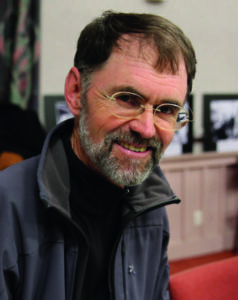
Fr Peter Healy SM
Part 1 of 2
He mihi tēnei ki a koe Hine nui o te Ao Katoa.
Ko koe Maria Takakau, ko Te Tātāhou.
Ko koe Te Whaea, ko Te Māra Kai.
Ko koe te Kuini o te Aonui.
He mihi anō ki te Kaipānui o tēnei kaupapa.
Mā tēnei kaupapa morearea tō ngākau e tuwhera.
We acknowledge you Mary, Protector of the Whole World.
You are Mary, Virgin Soil.
You are Mary, our Food Garden.
You are Mary, Queen of the Whole World.
Dear Reader,
may this ecological spirituality
open your heart at this critical time.
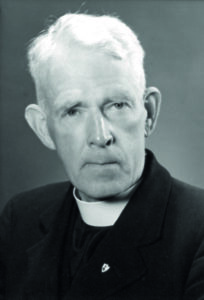
Pā Hemi Durning SM
The ecological spirituality described here is influenced by the place it has been developed. At Pukekaraka, Ōtaki, there is a whare tupuna, an ancestral meeting house. It was built in 1905 in honour of Mary Mother of the Whole World, Mary Mother of Peace and Light. This whare, named Hine nui o te Ao Katoa, is an expression of a faith practice that is Māori, Marian and Catholic. The sacred site of Pukekaraka is the very best of places to reflect with Mary as we respond to the interconnected crises of our times.
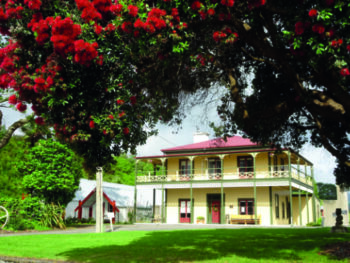
Pukekaraka – Whare and Presbytery, Ōtaki
One of the Marist priests buried here is Pā Hemi Durning, and he used a Māori word: whakawhenuatia, to highlight the experience of being grounded in a particular place. The Integral Marian Ecology of Pukekaraka is a whakawhenuatia event that is a grounding and homing experience for all who engage with it. Whakawhenuatia is a helpful notion as we explore the contours of our home-ground here and everywhere.
That we are in a new period of human-earth relationship is something most ecologists agree on. There is a blessed unrest in almost every part of our world, characterised by a search for greater justice and integrity for our planet home. Blessed unrest is showing up in the cries of protest from young and old. Heard from each hemisphere, from continents to island states, from the western world to native peoples, it is heartfelt and urgent. Our sisters and brothers in Oceania, dealing with sea-level rise and storm events, are eloquent in their call to us. There is an invitation before us all; to be seeing with new eyes, discerning with great heart and acting together in hope. We look to Mary for inspiration as we seek out new visions.
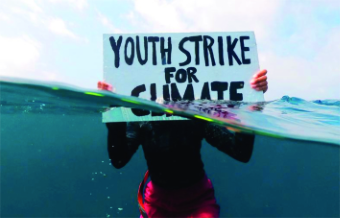
Virgin, Mother and Queen
Three well-known Marian titles form the basis for our initial reflection: Mary as Virgin, Mother and Queen. The span of these Marian titles has the potential to connect everyone and everything. Mary’s concern, from her youth to her heavenly reward, has a sweep that embraces the microcosm of the tiny and the macrocosm of the immense. This Marian ecology joins Mariology, gardening practices, the sustainability of our common home and cosmology, in a search for integrity. Mary’s concern for the whole of life is something we take great heart in. She will lead and guide us into a fresh engagement with our homes, our backyards and our workplaces. In her maternal care, Mary holds a promise for the revitalising of our relationships with everything that is harmed and broken.
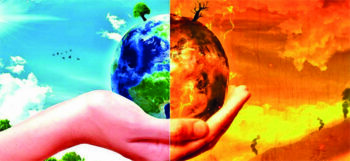 This integral ecology draws on the work of a Fijian Marist priest, Donato Kivi. He has written an ecological
This integral ecology draws on the work of a Fijian Marist priest, Donato Kivi. He has written an ecological
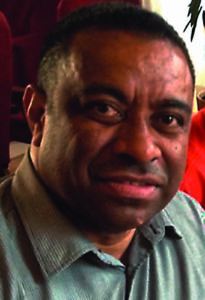
Fr Donato Kivi SM
spirituality for the formation and re-evangelisation of the people of Fiji. While his work is particular to Fiji, it is also for the whole world. It is a special contribution to a Marian way of caring for our planet home and engaging with the new corporal and spiritual work of mercy, nominated by Pope Francis in 2016.
With Mary as Virgin, we bow to the soil, the life giving matter that sustains and nurtures life. With Mary as Mother, we take in the garden, the relational site that is an intimate living community. With Mary as Queen, we lift our gaze to the whole Earth, our shared web of life that enables and empowers.
The spirit of Mary as Virgin, Mother and Queen is full of love and concern for all life, particularly places and persons suffering most in this time of crisis. Our world is troubled and she now cries out to us because of the harm we have inflicted on her (Laudato Si’ #2). We have one planet, one home, and it is a singular connected community. This community of life is in a perilous state because of human excess and exploitation. Pope Francis draws us into Mary’s compassionate heart when he writes; “Mary the Mother who cared for Jesus, now cares with maternal affection and pain for this wounded world. Just as her pierced heart mourned the death of Jesus, so now she grieves for the suffering of the crucified poor and for the creatures of this world laid waste by human power” (Laudato Si’ #241).
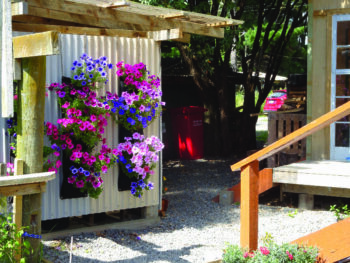
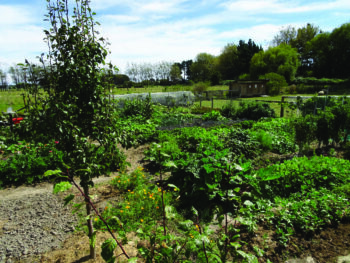
The Vatican Dicastery on Integral Human Development has seven goals to support the implementation of Pope Francis’ encyclical Laudato Si,’ Care of our Common Home. One of the seven goals is ecological spirituality, and the Marian Integral Ecology presented here is a particular Marist response to this goal. Mary’s maternal affection for our world is profound. We can imagine her as the first integral ecologist who learned her home-making craft in the extended family of the village of Nazareth. She inspires ongoing conversion and encourages us as we move into an ecological era. An era that needs to be characterised by scaling down and drawing back, so that we can live with greater reverence and respect.
E te Whaea Tapu, Hine nui o te Ao Katoa, tiakina mātou.
Holy Mother,
Our Protection and Help,
we ground ourselves
in your spirit of care.
Mary Virgin soil, inspire us.
Mary Mother and fruitful garden, feed us.
Mary Queen of the cosmos, enfold us.
May all that is lost be recovered,
all that is broken be restored in your goodness and grace.
Recreate us in reverence and respect.
Watch over us always.
Amen
 Entries(RSS)
Entries(RSS)